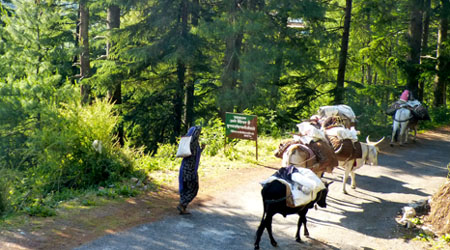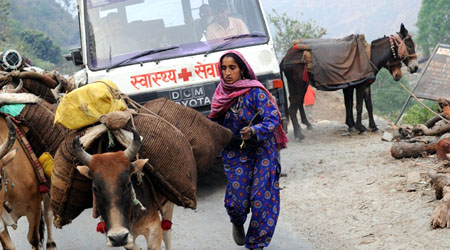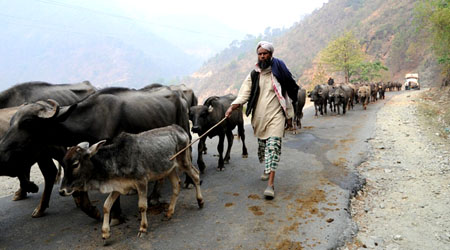
For centuries the Van Gujjars’ livelihoods have revolved around buffalo husbandry, depending upon both the Himalayan forests and the practice of transhumance. The Van Gujjars have a respectful, reciprocal relationship with their buffalo whereby they care for their herds and are in turn provided with rich, nutritious milk.
The Van Gujjars’ small, tough, thoroughbred buffalo are one of the few remaining bovines that are indigenous to India. The intertwinement of the Van Gujjars’ lives with those of their buffalo is evidenced by the buffalo’s knowledge of the nomadic routes. If they are undisturbed, the herds can reach their highland and lowland destinations without human assistance. Furthermore, the buffalo sense when it is the time to migrate and the Van Gujjars must inhibit the buffalo from departing without the rest of the camp. Many Van Gujjars have a deep emotional bond with their buffalo and consider them to be a part of their family. Their buffalo have distinctive, individual personalities and are given names, such as Makheri (naughty).



Whilst the buffalo are largely fed upon forest vegetation, the buffalo also consume supplements, such as mustard oil cake. The buffalo enable the community to survive in the forests as they convert roughage into milk. As vegetarians, the Van Gujjars’ primary source of protein is from dairy products. Buffalo milk also provides the community with its main source of financial income, with dairy products being sold to urbanites and villagers. Thus, the Van Gujjars partake in the North Indian economy. However, the Van Gujjars’ enmeshment within contemporary society has meant that they have faced several challenges concerning both the price of their milk, the health of their buffalo and access to fodder.